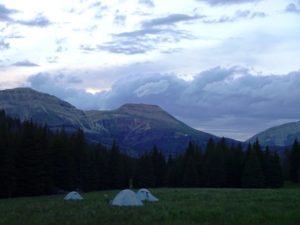 I recall as a child anxiously awaiting each new issue of National Geographic as it was sent to my school library. I would find myself living vicariously through the explorers, reports and ethnographers, whether it was the Masaai tribe in Tanzania and their rituals signifying entrance to adulthood or bucolic villages in the Carpathians seemingly stuck in time. My mind would race about these far off people and far off lands. My bucket list began to grow: Chile, Kazakhstan, the Tibetan Plateau, Ireland, The Baltics and… Montana?
I recall as a child anxiously awaiting each new issue of National Geographic as it was sent to my school library. I would find myself living vicariously through the explorers, reports and ethnographers, whether it was the Masaai tribe in Tanzania and their rituals signifying entrance to adulthood or bucolic villages in the Carpathians seemingly stuck in time. My mind would race about these far off people and far off lands. My bucket list began to grow: Chile, Kazakhstan, the Tibetan Plateau, Ireland, The Baltics and… Montana?
As much as I fantasized about and romanticized these distant landscapes, I found myself losing sight of the beauty back home in the USA. Upon entering college and taking ecology and geography courses, I learned the grim details about how that beauty is threatened; landscape development, drought, globalization, the list goes on ad infinitum.
We tend to forget about the dire state of affairs in our own backyard. For instance, one of the most visceral, yet inspiring sites at the Snowcrest Mountains was the vast white bark pine graveyards blanketing the hill slopes. Some still stood firmly supported by the hard soil, while others were felled. I had read about white bark pine death due to invasive mountain pine beetle, blister rust and drought, however, seeing it with my own two eyes on a large scale made the issue all too tangible and real.
The Rockies are frequently cited as the last bastion of true, “untrammeled” wilderness. When we heard a curious bear snooping around our campsite in the Mission Mountains Tribal Wilderness, we all realized we’re no longer the top dog in this environment.
Traditional ecological knowledge frequently cites a kincentric relationship with the landscape as one of the key ways to facilitate significant restoration efforts. I like to think there was some level of kinship that I, perhaps, naively, felt with the bear we collectively spooked out of our camp. I was definitely aloof and aware of the fact that it was a dangerous situation, but that very knowledge instilled in me a high level of respect, admiration and affinity towards the bear and the wilderness.
I saw myself develop a level of what Aldo Leopold referred to as, “intellectual humility.” I am beginning to understand that wilderness is not something that needs to be preserved in a predetermined set of non-discrete packets around the world for solely aesthetic or recreational values. Rather, wilderness is an innate part of us and we’re an innate part of wilderness.
We have co-evolved with the wild, learnt to adapt to each other and are intrinsically linked. That same approach of developing a personal relationship based on reciprocity and respect needs to be fostered in order to mend and restore that which we have grown distant from; the land. I’ve felt distant from the wilderness growing up in the middle of San Francisco. I learned how to read urban environments, but up until my first disastrous backpack through the Sierras a teen, I knew next to nothing and frankly irrationally feared the unknown.
Developing a direct connection with the land as we did in the Snowcrests and Missions hits you right in the gut and elicits a deeper, more intimate understanding of the landscape. I feel that I have not only learned the intellectual components space, place and land—but also their emotional and psychological sides. One of the underpinning concepts of traditional ecological knowledge is the idea that we’re borrowing these resources from the next generation. I’m positive that by learning how to read a variety of landscapes, urban, rural and wild, I can strengthen my ability to work in environmental restoration, social justice and education and make a difference for the next generation.